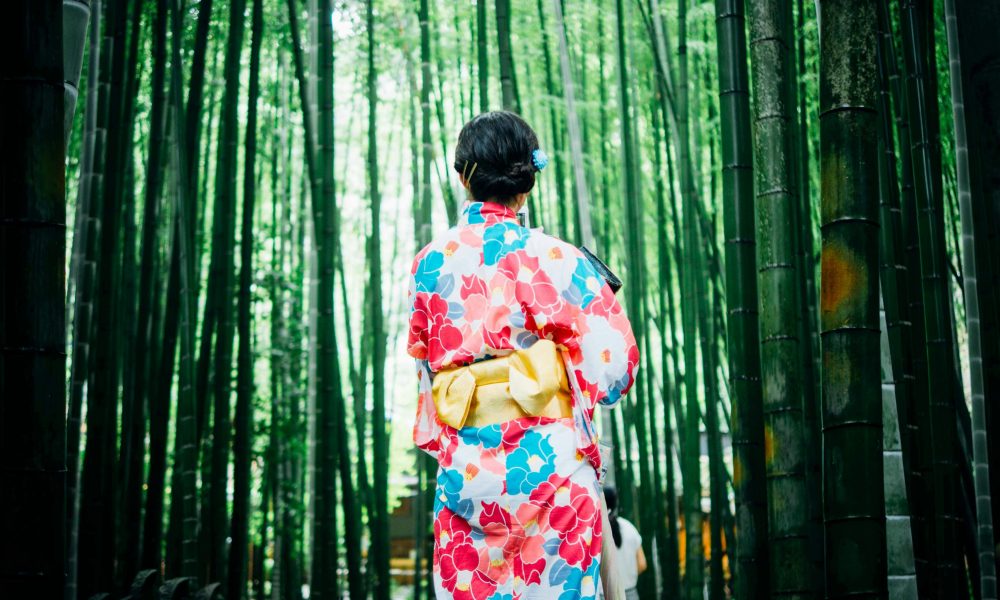The Difference Between Cultural Appropriation and Appreciation
I’m sure all of us at one point or another have been on the internet and seen a post or article accusing someone of cultural appropriation. Frequently this is not the case, as not all instances of an “outsider” sampling someone’s culture is cultural appropriation. Take wearing a kimono for example. Tons of people who visit Japan, regardless of ethnicity, will take a kimono home with them to remember their trip. But this is not cultural appropriation, it is cultural appreciation because it is respectful, not detrimental.
The conversation of cultural appropriation takes place across the internet. Websites like Tumblr, Reddit, Twitter, and Facebook have people sharing stories, photos, or experiences with others. In many cases, if a white person or white-passing person posts anything relating to another culture, they will get some sort of comment accusing them of appropriating said culture.
So what is cultural appropriation? Thomas Heyd in The Journal of Aesthetics and Art Criticism defines cultural appropriation as “to make it one’s property, which entails a right to privileged use and to restrict access to it. […] When appropriation is seen as morally problematic, this is because it is perceived as not legitimate, not fair, or, in general, not attentive to the rights and needs of those with prior claims to the items appropriated.” This definition highlights some of the most important aspects of cultural appropriation:
1- It is coercive. Cultural appropriation is based on a relationship of violence and exploitation. The European colonizer’s perceived “right” to native land and the subsequent violent theft and exploitation of it is an example of this.
2- It is detrimental. When a culture is appropriated frequently the members of that culture lose access to the appropriated thing, and/or are pressured to assimilate. The theft of indigenous land means the people who lived there no longer can access it, and historically they were forced into schools to strip that culture from them and force them to conform.
3- It is disrespectful. Cultural appropriation is based on ignorance and stereotypes, usually meant to make fun of the culture of origin. This could be a white woman saying she is the descendant of a Cherokee princess and walking around wearing beadwork and a crown of feathers. This woman has no sense of the cultural significance of these objects or her use of them but still walks around singing the “songs of her people” to make her friends laugh.
So how does this differ from cultural appreciation or cultural sharing? James O. Young in their journal article Art, Authenticity and Appropriation describes a more benign side of the “artistic handicap”; the idea that artists who engage in cultural appropriation will produce flawed works. They say “The fact that there is no hard and fast link between culture and artistic success should not surprise us. The cultural experience argument only alleged that experience of living in a culture was a necessary condition of being able to create successful works in certain categories. It never said that such experience was a sufficient condition of being able to do so. Nor should it have. After all, many people belong to a given culture and yet are unable to produce successful works of art in the categories typical of their culture.” This is more or less saying that appropriation is not the root of an artistic failing, and even if aspects of a work are appropriated that they still have value and artistic merit on their own. This helps us find some defining traits of cultural sharing or appreciation.
1- It is consensual. Cultural sharing is based on a mutual understanding that the outsider is allowed to partake in whatever aspects of the culture are being shared. There is an equality in that relationship, that the use of another’s culture is at their discretion, and if you do not respectfully follow their traditions or ideals that can be taken away. Things like a Japanese-owned store in Japan selling kimonos to tourists is an example of this consent. Through selling them the people running that shop give permission to the one buying it to partake in this aspect of their culture.
2- It is benign. This means the people to who the culture belongs can still partake in it, and the outsider’s use of the culture does not affect the insider’s use of that aspect of their culture. A tourist buying and wearing a kimono doesn’t mean a Japanese person can not wear a kimono if they wish to, it doesn’t force them to conform.
3- It is respectful. Cultural appreciation is based on understanding and context. It means the outsider understands the cultural significance of the aspect they may be appropriating, and they have a respectful view of it, one that does not make fun of the culture or promote insensitivity. This is the responsibility of the outsiders, it means that the person who buys the kimono does their research on what a kimono is and why it is significant. It means they don’t do yellow face or make fun of Asian people to their friends, using their kimono as a tool to do so.
If the use of another’s culture does not meet all three of these criteria it means it is not cultural appreciation or cultural sharing.
So what are some actual examples of this divide at work? Well, an excellent case study of cultural appropriation would be the Hippie or Boho aesthetics. We’ve all seen those girls with hair wraps, long flowing skirts, and patterned tops, but did you know that this aesthetic actually capitalizes off of the suffering of the Romani and Native American groups?
Hopefully, this has been a helpful beginner’s guide to cultural appropriation vs appreciation and you have learned something valuable in it. When you go forward in life, buying hippie pants or a beaded necklace always remember: when engaging with a culture that isn’t yours do your research, and be respectful.









